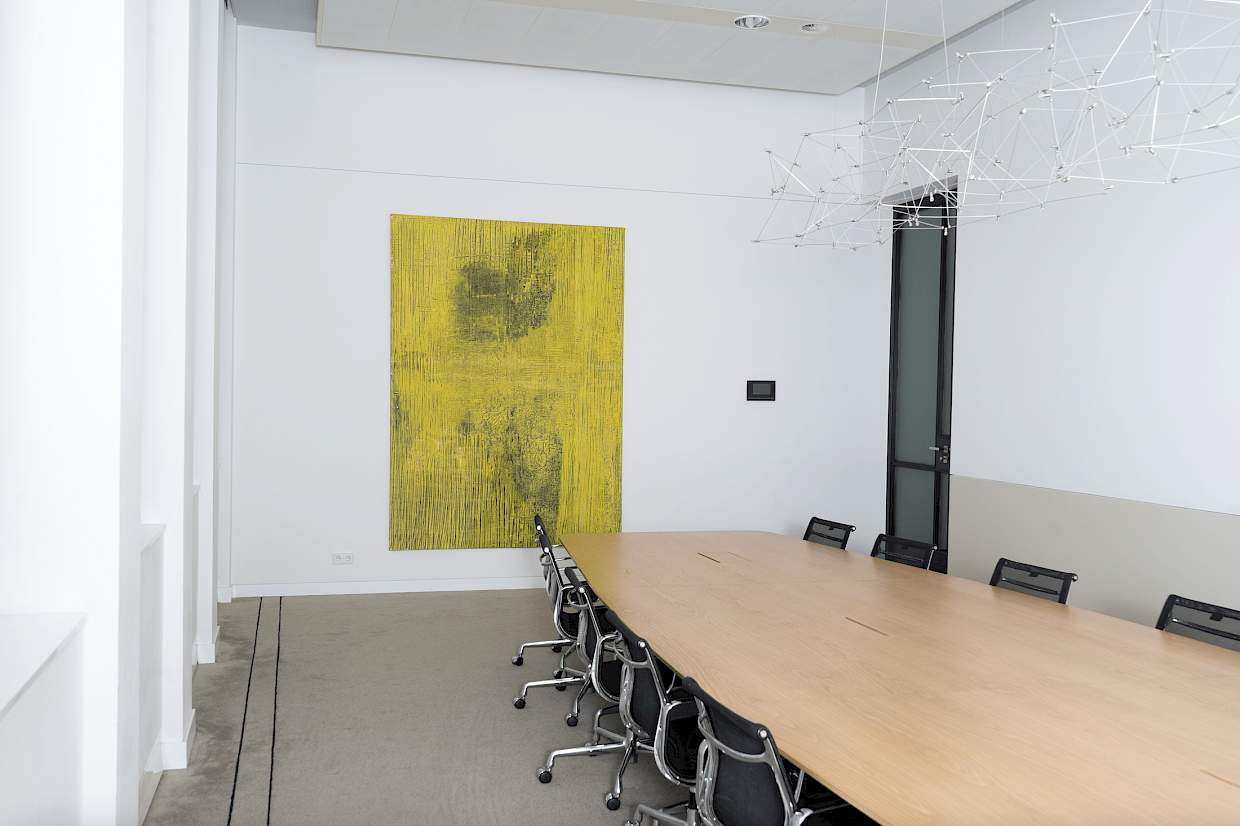

Avery Preesman (b. 1968)
Untitled (Venice Painting III)

In 1996, Curaçaoan artist Avery Preesman showcased his works at a major exhibition at the Museum of Contemporary Art in Ghent and in 2001, his art was shown at the Stedelijk Museum in Amsterdam. The latter museum’s director Rudi Fuchs is lyrical about Preesman’s style of painting, made apparent from the enthusiastic commentaries he’s written about him. Preesman, together with Michael Raedecker and Robert Zandvliet, was seen as a great up-and-coming talent with a bright future ahead of him. His stay at the Ateliers ‘63 (where he is admitted without prior education), the fact that he won second prize at the Prix de Rome in 1994, and winning the Theo Wolvecamp prize four years later only justifies that status. Fuchs’ trust in him as an artist is entirely justified, though things don’t always work out the way one might hope.
Preesman stays away from everything having to do with commerce and prefers to operate in relative anonymity. His suspicion of the (art) world and his somewhat stiff personality is in line with the best of the art tradition’s maladjusted geniuses, but have probably obstructed a major international breakthrough. The art world can be harsh for outliers, no matter how pure and talented their art and personalities.
Preesman’s large painting Untitled (Venice Painting III) was displayed at the 1997 Venice Biennale at the Fondazione Bevilacqua La Masa, a renowned exhibition space where many important artists showed their work over the years. The title of the work is undoubtedly derived from this presentation. The artist himself sometimes referred to this painting with the title Mangrove. It is unlikely a tidal tree with its typical root structure and its reflection in the water actually inspired the creation of this painting, and the title was almost certainly chosen intuitively. Preesman is a purely abstract painter who doesn’t aim to represent anything tangible in his works. The viewer gets colour and brushstrokes, and that’s about all.
Preesman’s paintings are generally rough in structure. Grids are often applied on top of each other, the patterns of which are disturbed by either a stubborn deflecting line that creates an opening or, on the other hand, by the brushstrokes becoming more intense. This can also be seen in Untitled (Venice Painting III). It is a strikingly light and almost “Impressionist” painting compared to the rest of Preesman’s work. Part of the surface is made out of small pieces of aluminium foil that remain partially visible, creating a vibrating image. By leaving areas of the canvas uncovered by paint, Preesman aims to show the layering in his paintings. He seems to be looking for the foundations of the painting.
Preesman is an artist who does not work for the audience or for money, but purely and solely for his art. A rare instance these days. A&O Shearman is fortunate to own a wonderful painting by such an artist.